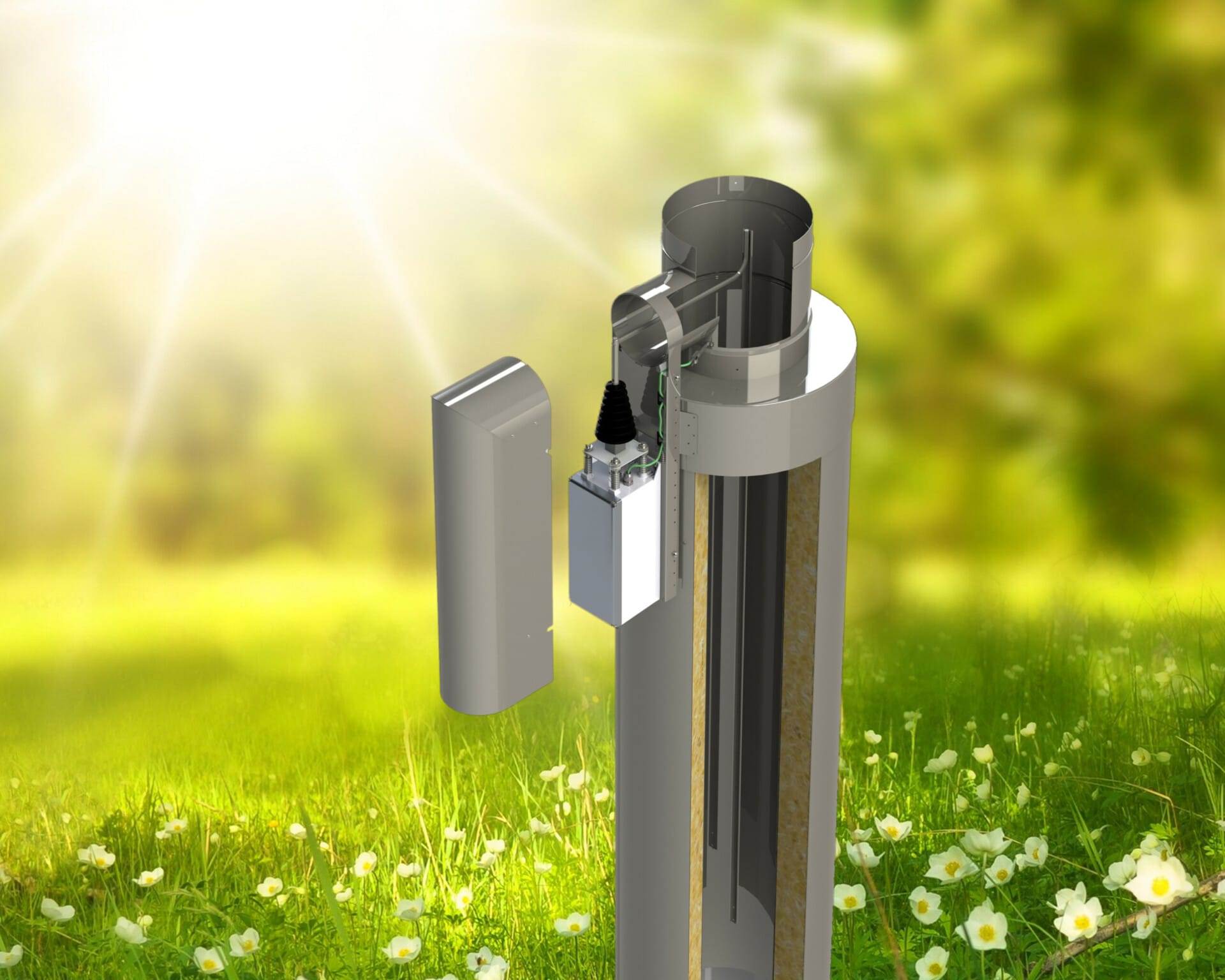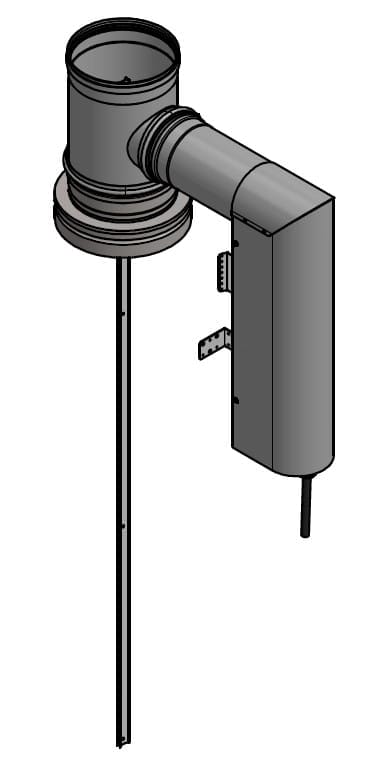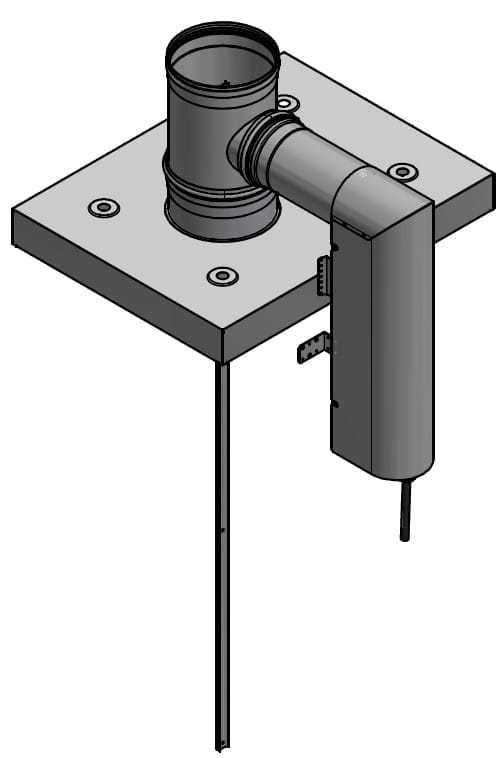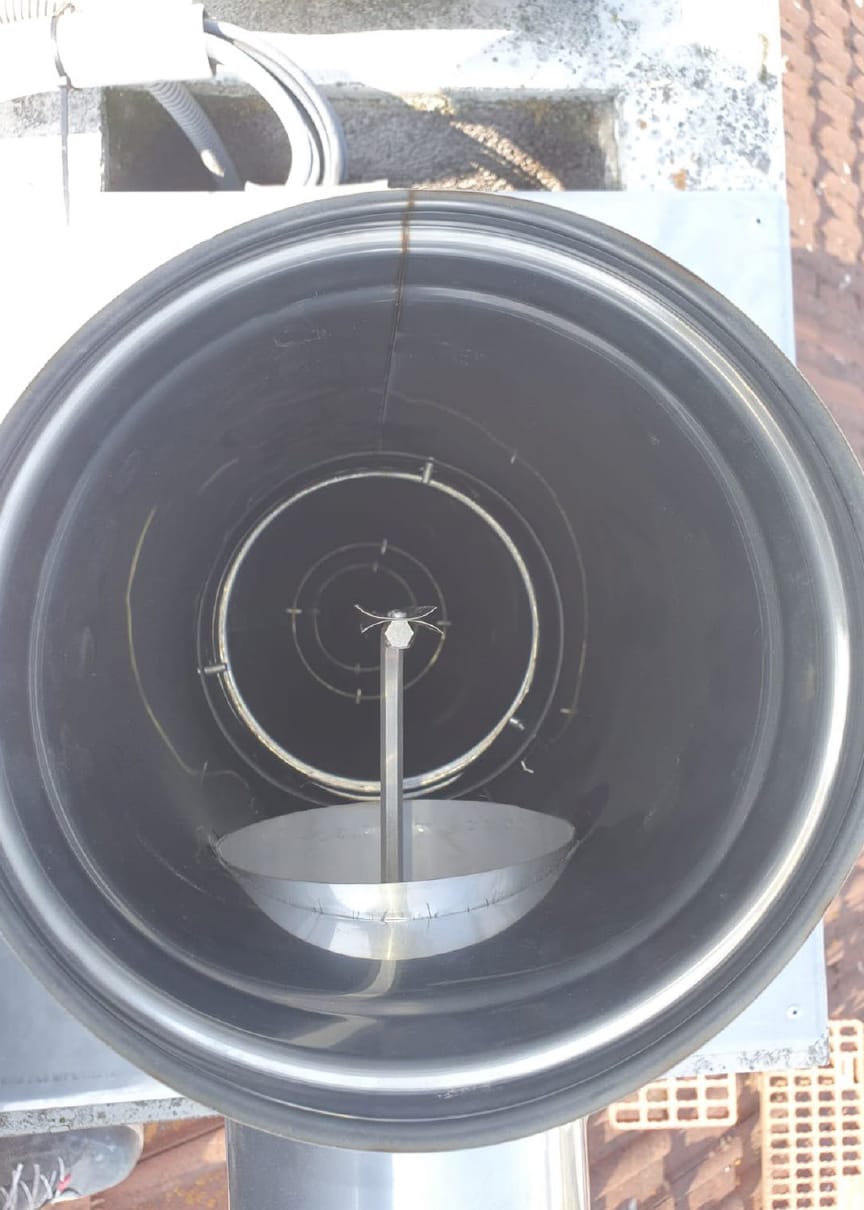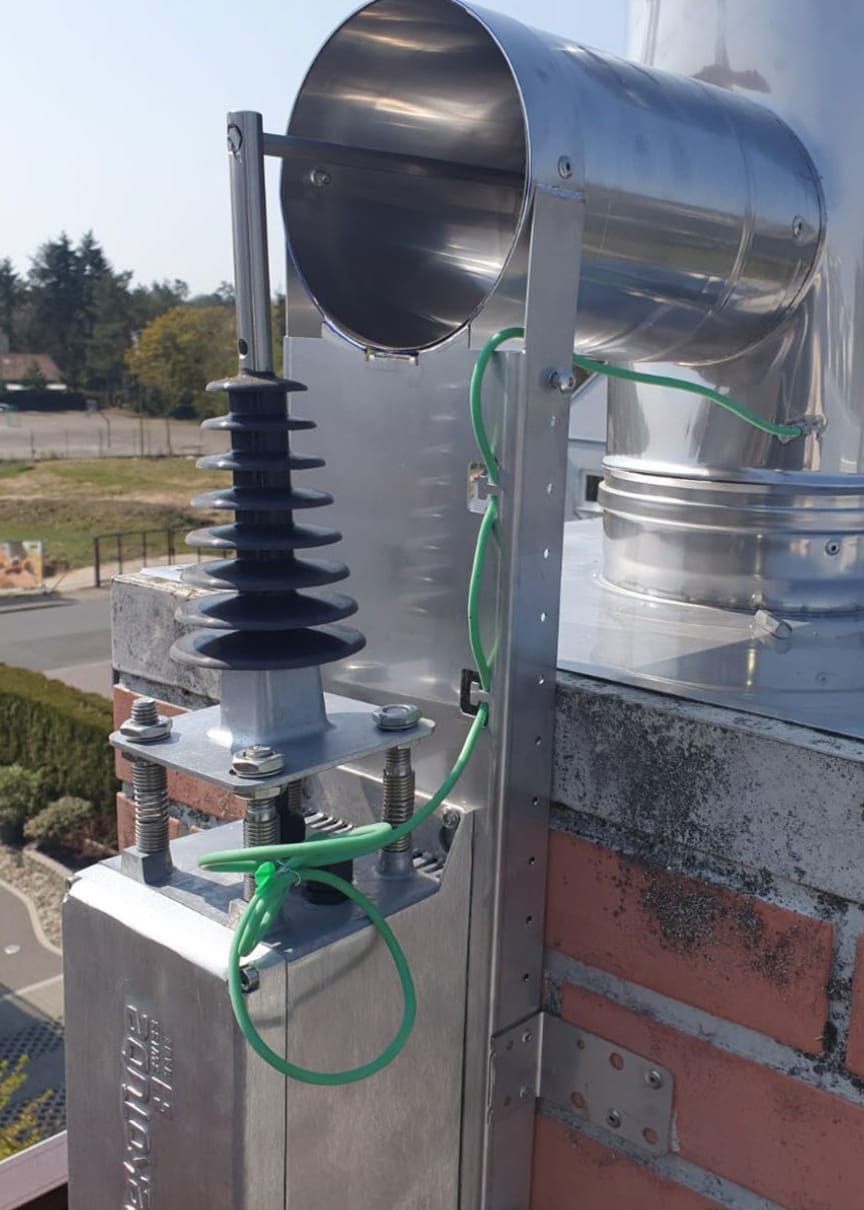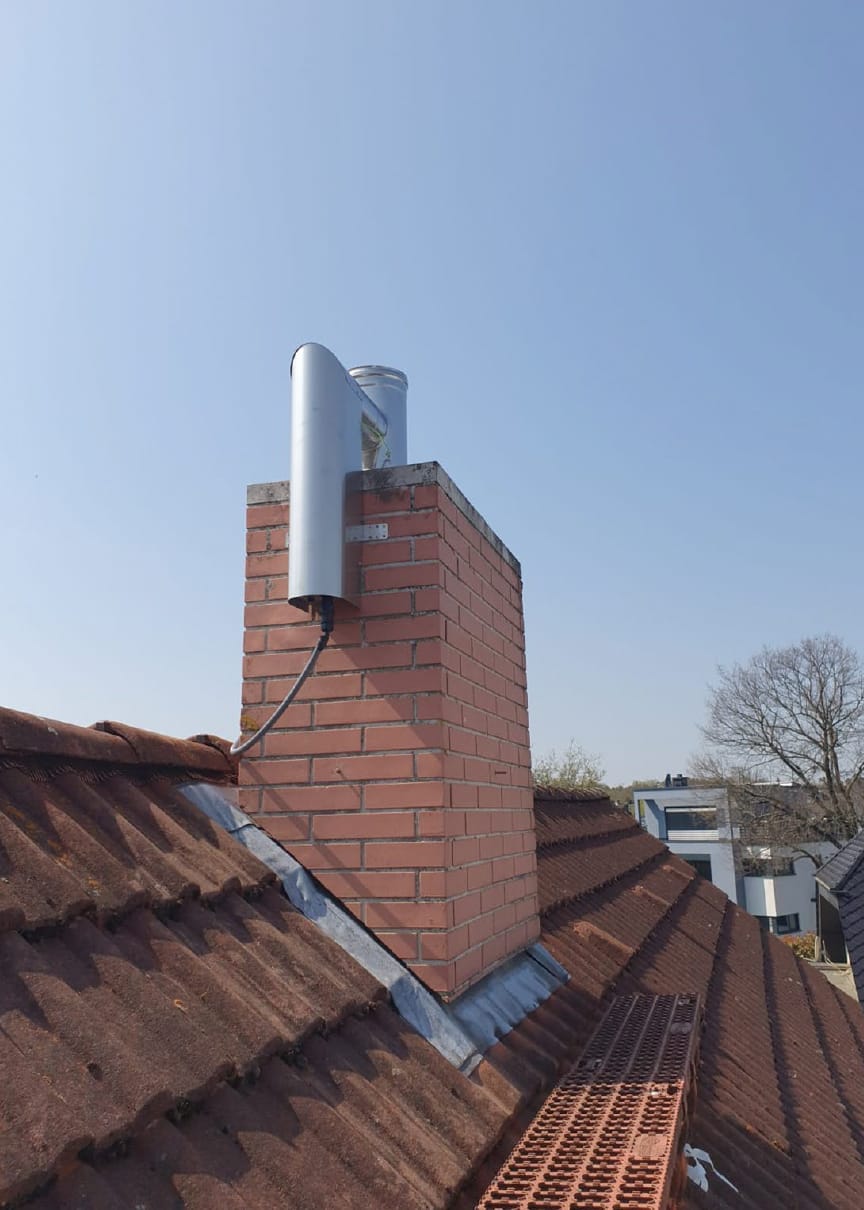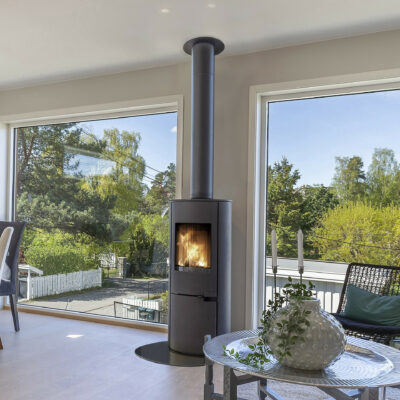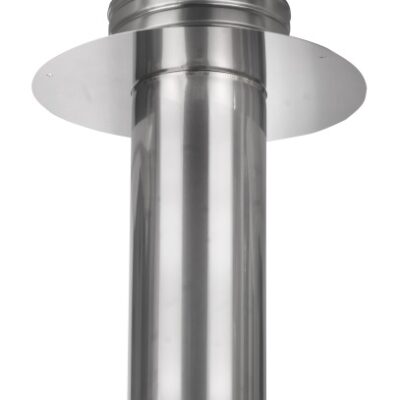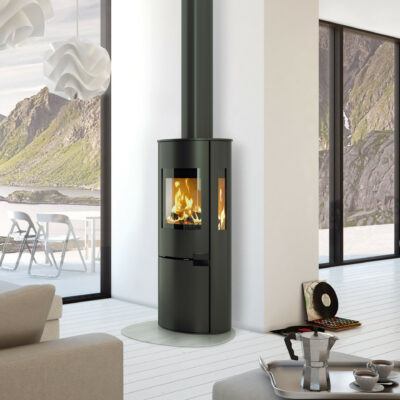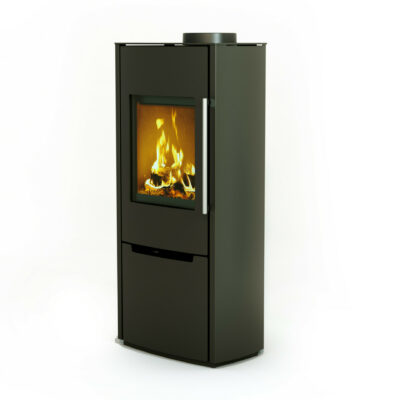Description
UP TO 95% PARTICLE REDUCTION
Electrostatic technology = PM2.5 particle reduction
The Schiedel ePURO fine dust filter is an electrostatic particle separator for wood burning appliances, such as wood burning stoves, but also for wood/pellet central heating systems, up to 50 kW.
The installation is relatively simple from the start. A 230 V connection needs to be provided on site.
The adaptability of Schiedel ePURO makes it possible to use it on existing steel chimneys. It reduces the fine dust content in the flue gas by up to 95%, which contributes to cleaner air.
Taking local emission regulations into consideration, new and existing stoves can be equipped with the Schiedel ePURO.
| Technical specifications | |
| High voltage | 15 to 30 kV (modulating) |
| electrical power | max. 30 W |
| Standby operation | 0.7 W |
| Diameter of the application area | |
| Ceramic | Ø 16, 18, 20 cm |
| Stainless steel | Individually adjustable |
| Approval | |
| DIBT-approval Z-7.4-3451 | |
How it works
The active fine dust filter with electrostatic separation charges the dust particles contained in the flue gas. This causes them to deposit on the inner wall of the steel chimney.
Cleaning is carried out without dismantling the separator, when the chimney is swept.
The system is activated when the connected fireplace is in operation. The 230 V high-voltage transformer delivers power of 15 to 30 kV with max. 30 W. In stand-by mode, the consumption is a low 0.7 W.

1.The fine dust particles in the flue gas flow through the chimney flue.

2. Electrons are released by means of a high voltage electrode.

3. The electrostatically charged particles move to the chimney’s inner wall.

4. The fine dust collects on the inner wall of the chimney.
Components
| COMPONENT | SAP | SCHEMATIC COMPONENT | DIAMETER |
| Filter | 175680 | 1-7b | all |
| Adapter | atyp | – | on demand |
| T – Piece | 161773 | 8 | <150 |
| 161775 | 8 | <200 | |
| 161777 | 8 | <300 | |
| Reduction tube (L500) | 160904 | 9 | 130 |
| Locking band | 161293 | 8 to 9 | 130 |
| 161294 | adapter to 8 | 150 | |
| 161296 | adapter to 8 | 200 | |
| 161298 | adapter to 8 | 300 |
| OPT. EXTRAS | SAP | SCHEMATIC COMPONENT | LENGTH |
| Safety switch | 176054 | – | – |
| Longer connection cable | 176055 | 5 | 5m |
| 176056 | 5 | 10m | |
| LCD display | 176057 | – | – |
Environmental. CO2 neutral. Sustainable.
Climate protection concerns all of us. The intelligent and sustainable use of sustainable raw materials, such as wood, as a renewable energy source, combined with energy efficiency heating systems helps to meet climate protection requirements and makes a significant contribution to lowering emissions.
As a renewable resource, wood releases only as much carbon dioxide (CO2) when burning, the same as with the natural decomposition process in the forest, or as much as the tree has stored during its growth process. Wood does not release any additional CO2 when burning.
Air pollution has a tremendous impact on our health and our environment. Compared to other energy sources, firewood has a low emission factor with a very low primary energy factor of 0.2.
Even though wood is a low cost and above all sustainable alternative to the current excessive gas and oil costs, wood is also criticised due to the fine dust discussion. Outdated stoves with obsolete combustion technology are a decisive factor here.
Modern stoves with efficient burning technologies do not contribute to an excessive fine dust load when used correctly. – Briefly put: Old appliances are part of the problem. New appliances are part of the solution.

